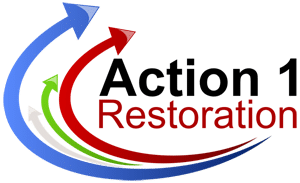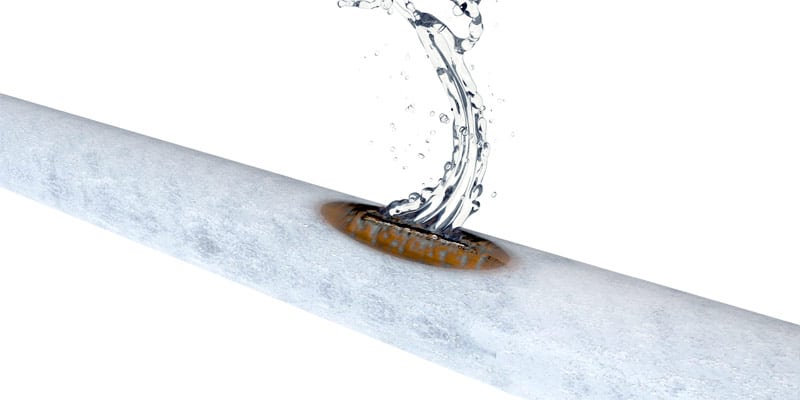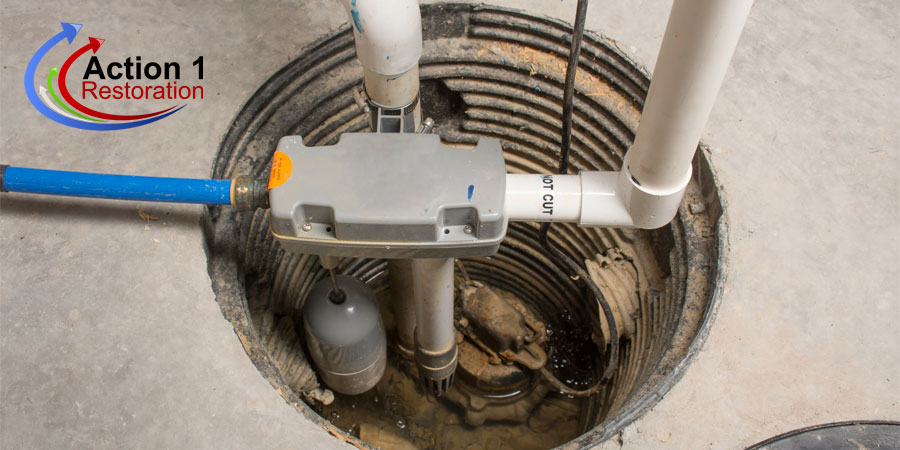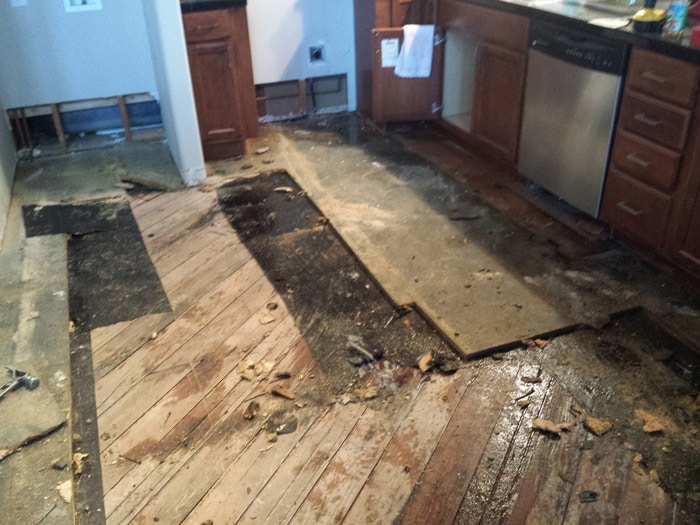If Your Pipes Are Frozen, Follow These Steps to Thaw Them Out
It’s estimated that over 250,000 homes will experience water damage from frozen and burst pipes each year. These contribute to the nearly 2.5 billion dollars that the insurance industry pays out yearly on water damage and mold costs. With so much time and money spent surrounding this issue, many homeowners wonder what they can do to prevent this from happening in their own homes. Fortunately, there are many things you can do to care for and properly thaw your pipes in order to minimize the risk of them bursting.
Even if you’ve gone through many winters without any issues with your pipes, this doesn’t mean you’ll be problem-free this year. You never know when a problem can occur, and for many homeowners, this means a surprise flood when they least expect it. At Action 1 Restoration, we want to help homeowners minimize their home’s risk of flooding. We encourage you to read the information below to learn how to prevent burst pipes, thaw frozen pipes, and restore your home if water damage does occur.
Behind the Scenes: How Pipes Freeze and Burst
In most homes, water can run freely through pipes as long as the weather does not reach below 20 degrees. Unfortunately, in climates where the weather reaches below freezing, this can result in the water inside pipes freezing overnight when residents aren’t using their plumbing. This is especially true for pipes that are located in areas of the home that are not heated or fully insulated, including the garage and unfinished basements.
Once pipes are frozen, the water inside will naturally expand. Unfortunately, this often causes the pipes to burst, as they aren’t able to handle the change in pressure. This can result in flooding, which will worsen as the pipes begin to warm up and thaw during the day. In situations where the pipes don’t completely freeze, residents may find that their water is slow to move through the pipes. This is the result of ice pieces inside of the pipes that can be slow to melt.
Risk Factors for Frozen Pipes
It’s important to recognize the signs of your home being at a greater risk of frozen pipes. By doing so, you may be able to prevent this from happening. Some red flags to look for in your home include:
- You live in a very cold climate with temperatures that reach below freezing.
- You live in an older home that doesn’t have pipes that are well insulated.
- You live in a cold area and several areas of your home are unheated.
- You have outdoor pipes and live in an area that reaches freezing temperatures.
- You have seen chunks of ice in your water when it’s especially cold outside.
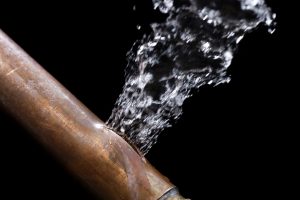
Tips for Preventing Frozen Pipes
Keep Your Home Warm
Although many people turn down the thermostat at night, this can be detrimental to the pipes in an older home. Instead, it’s recommended to keep your thermostat the same both day and night. This will help keep pipes warm, even when it’s extremely cold outside.
Keep Cold Air Out
If you have a garage, then it’s important to keep the door closed to prevent the cold outside air from coming in. If you must open it, make sure it’s not left open for more than a few minutes before you close it again. Since this room is generally not insulated, keeping the cold air out can help keep pipes from freezing.
Let Your Faucet Drip
Turn on one of the faucets that’s connected to an exposed outdoor pipe. Allowing it to drip even just a little bit will help minimize the risk of freezing when temperatures are low.
Open Your Cabinets
Open up the cabinets inside of your kitchen and bathrooms. This will give the pipes a better chance of staying warm so that they don’t freeze.
Don’t Turn off the Heat
If you plan on leaving for a vacation or the holidays, don’t turn the heat off. Instead, leave your thermostat set at around 60 degrees. Although this may mean your energy bills won’t be as low, it’s worth it to avoid the potential expenses that are associated with water damage from burst pipes.
Seal Windows
Sealing your windows with plastic will help keep the outside air from coming in through any cracks or edges. Ultimately, this can help keep your home much warmer, which can lead to warmer pipes that don’t freeze. If you don’t want to seal your windows, then it’s recommended to replace the weather stripping around them for added protection.
Add Insulation
If you’re looking for a long-term way to minimize the risk of frozen and burst pipes, then insulate your pipes before it’s cold out. This will be beneficial for the colder months but can also be useful throughout the rest of the year. That’s because insulated pipes lose less heat, which means lower energy bills and better efficiency.
To insulate your pipes, all you need to do is choose the type of foam insulation that works the best. You can install this yourself pretty easily, although many homeowners hire contractors so that they don’t have to climb ladders or crawl into small spaces.
Seal Pipes Prone to Freezing
Find the pipes that are most prone to freezing around your home. Once you’ve identified these, wrap small sections of them with heating tape. This is easy to find at most home improvement stores and works like a charm for preventing pipes from freezing when temperatures are low. It’s recommended to use automatic heating tape that will sense when it needs to be turned on. If you use manual heating tape, you will have to turn it on and off based on when you think the pipes might freeze.
Steps to Thaw Frozen Pipes
If you find that your water isn’t freely coming out of the faucet or your toilets aren’t refilling after flushing, this likely means that your pipes are frozen. When this happens, it’s important to act fast to reduce the risk of those pipes bursting and causing thousands of dollars in water damage. You’ll want to follow the steps below as soon as possible.
Step 1. Turn Off Water
Find the main water line to your home and turn it off immediately. While this won’t stop the pipes from bursting, it can help minimize water flow if they do break. This will also help prevent water from quickly rushing through pipes once the water does thaw and it’s able to flow once again.
Step 2. Open the Pipe
To relieve any pressure that may have built up, turn both the hot and cold handles on your faucet so that they are open. Doing so will also ensure the water pressure isn’t able to build up once the pipes have thawed out.
Step 3. Thaw Your Way
There are many different ways you can thaw out your frozen pipes. Choose which works best for you based on what you have available and are comfortable with using. Some of the best options for pipes that are exposed include:
- Hot Towels: Wrap hot towels around pipes until they are thawed. This will require you to continuously rinse your towels with additional hot water, so it may be a slower option.
- Electrical Heating Tape: This can prevent frozen pipes, but it can also help thaw pipes that have already frozen over. To use this, simply apply the tape onto the pipe and turn it on until it is thawed out. This is a great solution since you can leave it on to prevent freezing in the future.
- Hairdryer: Grab your hairdryer and direct the hot air at the pipe, beginning with the area that’s closest to the faucet. When using this solution, exercise caution to ensure the unit doesn’t come into contact with water.
If you’re dealing with a pipe that is inside of the wall, you’re not out of luck. There are many solutions that can help speed up the thawing process. Some of the best options include:
- Heat Lamp: Point a heating lamp at the wall where the blockage is located. Allow this to blow air until you see that the pipe has started to thaw. With this solution, use caution to keep the lamp moving and prevent it from coming in contact with water.
- Increase the Heat: Turn your thermostat up to help make your home several degrees warmer. In many situations, this will thaw pipes without any extra work on your part.
- Call a Plumber: If you need help with thawing enclosed pipes, contact a plumber for help. They will use their experience, training, and tools to help clear the blockage safely.
What if Your Pipe Bursts?
After turning off the main water line in your home, it’s important to get the water out as soon as possible. From there, you’ll want to dry the moisture and remove any materials that were damaged beyond repair. While this may be something you can do yourself, don’t take on the project if it’s too stressful. At Action 1 Restoration, we highly recommend calling a restoration technician if your pipes burst. Professionals like ours can take care of the cleanup and make sure your home is restored the right way from start to finish.
